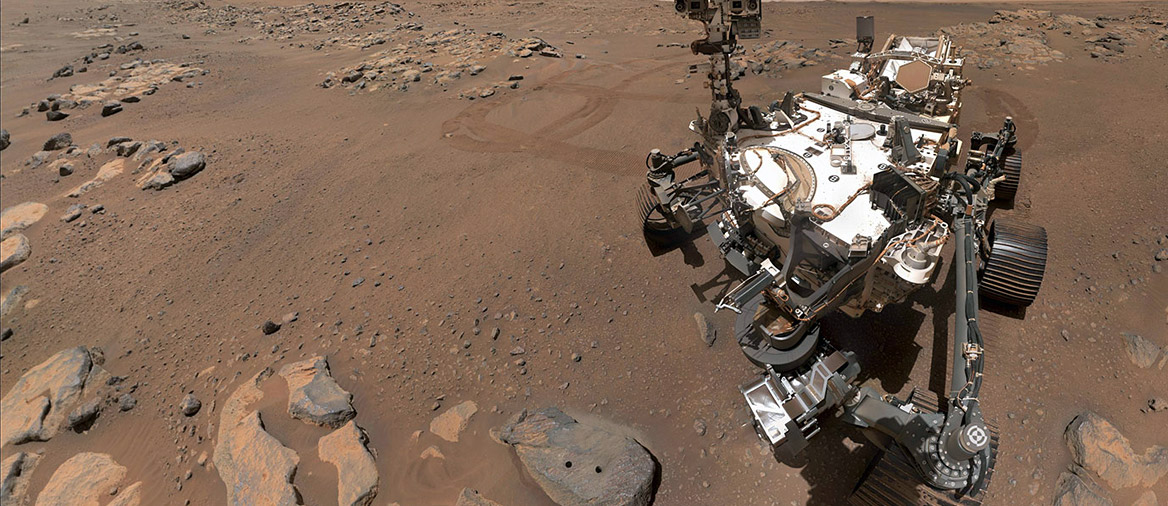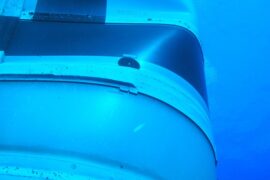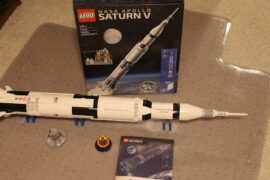What is a Mars Rover?
A Mars Rover is a robotic vehicle that was designed to travel through the surface of Mars in order to study the planet from the ground. Rovers (also known as landers) have many advantages over using telescopes or orbital probes to study a planet. The most important one is that they can be used to analyze samples, terrains, and the atmosphere up close.
Modern rovers are directly operated from Earth. Older projects like the Sojourner required a base station for communication.
The rovers look like the lower half of an all-terrain vehicle with a sophisticated science lab on top of it. They are made to move across the difficult-to-navigate martian dunes and are able to withstand the rough conditions of the Martian surface like the constant sand storms.
Hundreds of engineers and scientists collaborate to design and build a Mars rover. It takes many years of development to get one ready because they have to be thoroughly tested on Earth so they can achieve their mission. They can’t be repaired and it is not possible to send parts so it is important that every little piece works correctly and is fully tested.
Mars rovers are also extremely expensive. For example, it cost approximately $2.7 billion dollars to get the Perseverance rover to Mars in 2020.
A total of 7 rovers have successfully landed on Mars. Five were launched by the US, one by China, and one by the Soviet Union. Currently, 3 of them are still operational, these are Curiosity, Perseverance, and the Zhurong.
The names of the rovers are usually chosen through a contest where children can submit their ideas along with the reasons why they think the name is a good fit.
The word rover is a very fitting name for these robotic friends because it means “one who wanders”.
What does a Mars rover do?
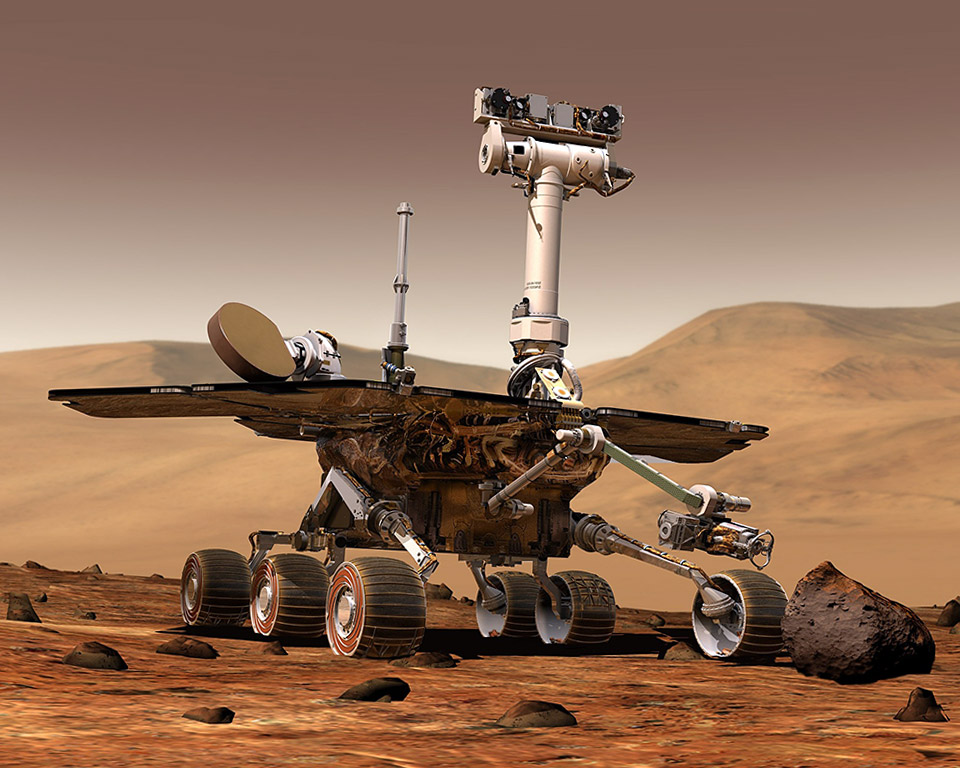
The objective of a Mars rover is to study the planet in-depth directly from the Martian surface. Rovers perform hundreds of experiments during their lifespan to analyze Mars’ soil and atmosphere to learn more about their composition, patterns, and even look for signs of current or past life that could have inhabited it.
The last couple of rovers, the Curiosity, and the Perseverance also have the objective of testing technologies that could potentially help a future manned mission to Mars. For example, Perseverance is testing a method to extract oxygen directly from the Martian atmosphere which is mostly made of carbon dioxide. This would mean that a Mars mission with astronauts wouldn’t have to carry as many oxygen tanks, or that in the future we could be able to build a self-sustainable permanent colony.
Mars rovers are also trying to discover the secrets of the past of the planet. By analyzing rock and soil samples, scientists have used these interplanetary robots to learn that Mars had oceans at some point and that it had the right conditions to develop microbial life (they are not saying it did have microbial life, just that the conditions were favorable).
A good part of the day-to-day of rovers involves simply traveling to collect samples at different locations. It is equipped with advanced all-terrain wheels that allow it to move across the desert-like conditions of the planet. Still, traveling has to be done very slowly and carefully because getting the rover stuck or having it fall through a risk would probably mean the end of the mission.
The mission of the Mars rovers does not include a trip back to Earth. Once their power runs out, they’ll shut down and remain there. However, that does not mean that they aren’t prepared for the future. The rovers have many sample tubes where the most interesting pieces they find can be stored perpetually. This is done with the hope that one day we can send people to Mars and they can collect them and bring them back to Earth.
Goals of Perseverance
Perseverance is the latest Mars rover sent by the US. It landed on Mars on February 18, 2021. To better answer the question “what does a Mars rover do?”, here is a list of the science objectives of the Perseverance according to NASA.
- Study the rocks and landscape at the landing site to reveal the region’s history.
- Explore an area that once had the potential to host and preserve ancient life
- Learn about the processes that formed and modified the geology of the exploration area, which was selected because it shows signs of an astrobiologically-relevant ancient environment and geologic diversity.
- Determine the habitability of an ancient environment.
- Search for materials with high biosignature preservation potential.
- Obtain the most promising samples that represent the geologic diversity of the landing site.
- Demonstration of In-Situ Resource Utilization technologies to enable propellant and consumable oxygen production from the Martian atmosphere for future exploration missions. (translation: test technology that allows extracting oxygen out of the atmosphere).
- Characterization of atmospheric dust size and morphology to understand its effects on the operation of surface systems and human health. (translation: learn how the atmospheric conditions would affect the human body)
- Surface weather measurements to validate global atmospheric models. (translation: collect and record Mars’ weather data)
- A set of engineering sensors embedded in the Mars 2020 heat shield and backshell to gather data on the aerothermal conditions, thermal protection system, and aerodynamic performance characteristics of the Mars 2020 entry vehicle during its entry and descent to the Mars surface. (translation: save all the possible data about how the heat protection systems performed during the entry to the planet)
What type of instruments does a Mars rover have?
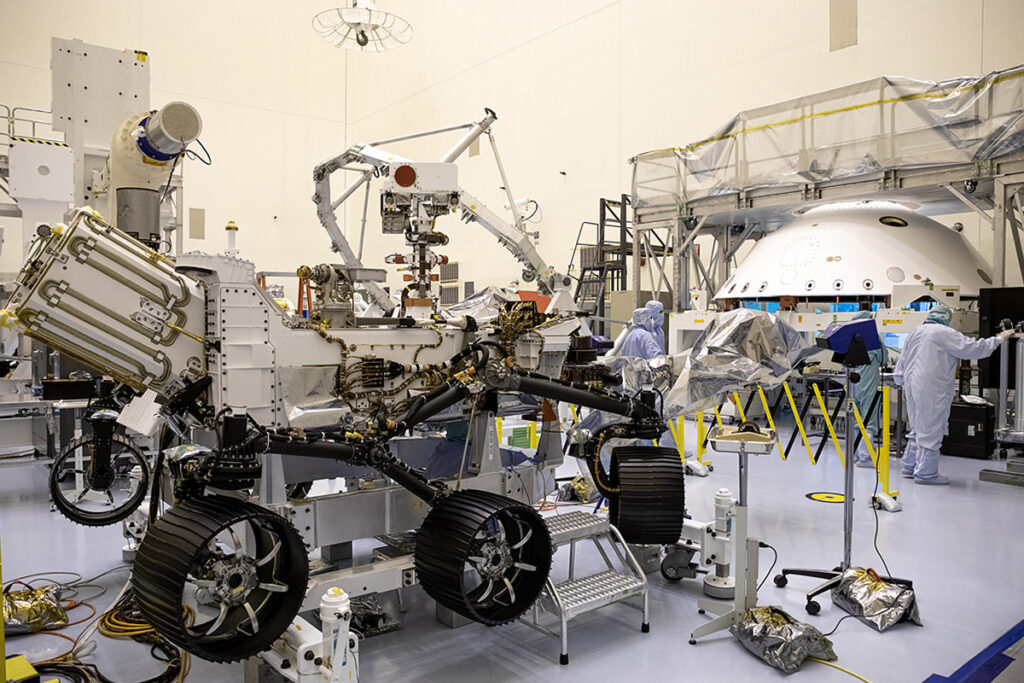
The Mars rovers are equipped with a whole science lab on their backs. Each has a different mission so they all carry different types of instruments to collect and measure samples. But just to give you an idea of the type of equipment they carry, here’s a list of the instruments the Perseverance has access to (they all get cool nicknames by the way).
- Mastcam-Z – Panoramic and stereoscopic advanced camera system
- MEDA (Mars Environmental Dynamics Analyzer) – A set of sensors to measure the environment (temperature, wind, dust, pressure, etc)
- MOXIE (Mars Oxygen ISRU Experiment) – Technology that allows extracting oxygen out of the Martian atmosphere which is full of carbon dioxide
- PIXL (Planetary Instrument for X-ray Lithochemistry) – An X-Ray spectrometer to analyze the composition of the Martian surface
- RIMFAX (Radar Imager for Mars’ Subsurface Experiment) – A radar to study the Martian subsurface
- SHERLOC (Scanning Habitable Environments with Raman & Luminescence for Organics & Chemicals) – An UV spectrometer to analyze minerals
- SuperCam – Imaging technology that can detect organic compounds and do chemical composition analysis.
The Perseverance was also equipped with a drone to obtain aerial images of Mars. This drone was called Ingenuity and is still currently in good shape after performing more than 40 flights.
Summary
- Mars rovers are designed to study the geology, composition, and atmosphere of Mars to learn more about the planet and look for possible signs of life and hints about its past.
- Mars rovers are controlled remotely from Earth and spend most of their days traveling through Mars, collecting samples, analyzing them, and sending data back to us.
- Mars rovers are equipped with all kinds of instruments like cameras, spectrometers, sensors, robotic arms, drilling tools, and experimental technologies.
Enjoyed this article?
Get daily 10-minute PDFs about astronomy to read before bed!
Sign up for our upcoming micro-learning service where you will learn something new about space and beyond every day while winding down.

